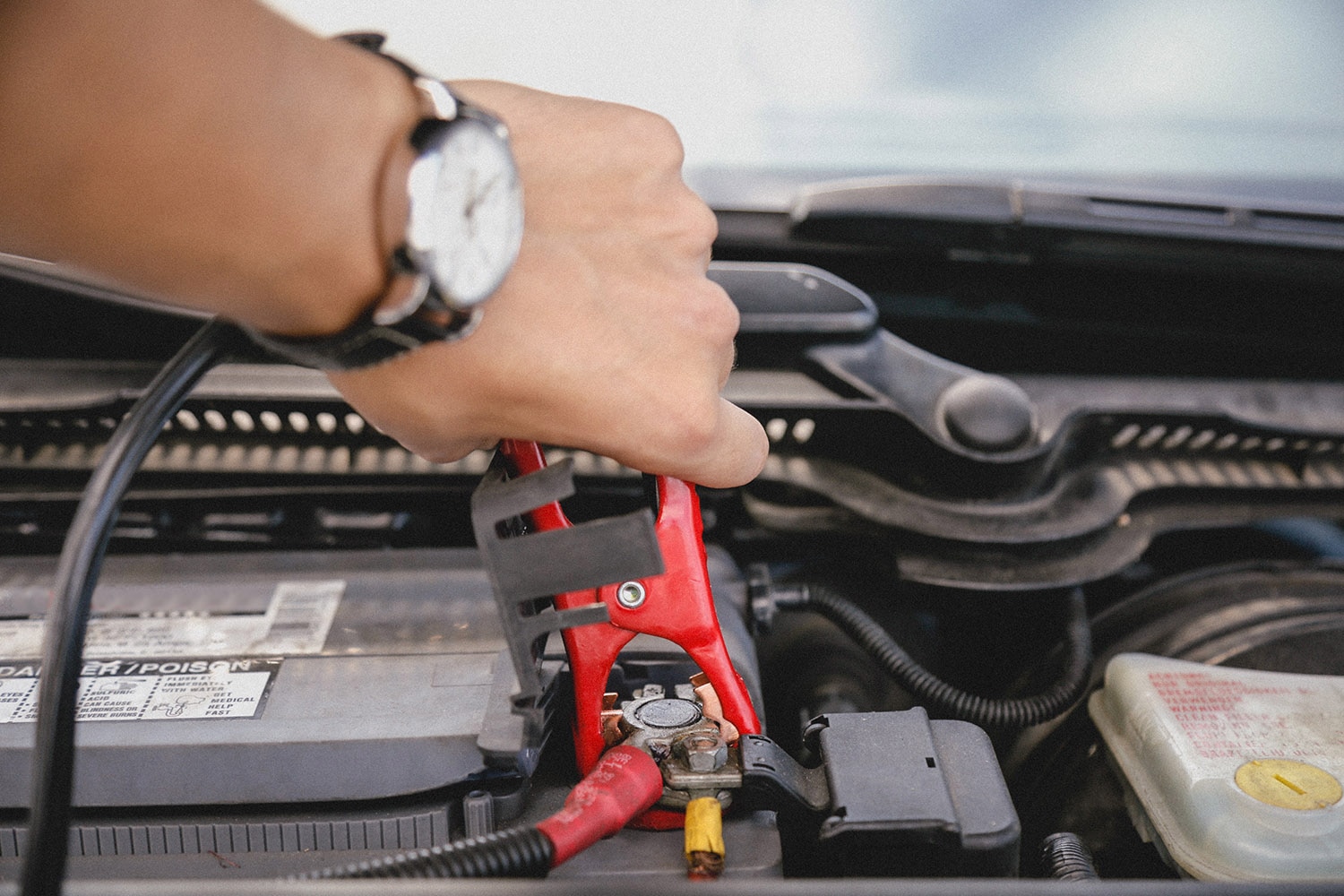How to Jump-Start a Car
These steps could help get you back on the road.
 Manuel Carrillo III | Capital One
Manuel Carrillo III | Capital One
Your vehicle's battery can die for several reasons. You may have drained it by leaving a dome light or another accessory on, for example, or it might simply have reached the end of its life, which tends to be about four years. If a dead battery leaves you stranded, here's how to jump-start your car.
Gather the Right Tools
Jump-starting a car generally requires a power source and jumper cables to transfer electricity. If you're using a portable jump-starter, the device will likely include everything you need to start the car. If you don't have one, you'll need to use a pair of jumper cables and access an adequately charged 12-volt battery.
Locate the Battery
When using jumper cables and a charged battery from another car, locate the batteries in both vehicles before trying to connect anything. Car batteries are often installed in the engine bay but might be hidden beneath a plastic cover. Some carmakers put the battery in the trunk, and some late-model luxury vehicles come with two batteries.
Once you've identified the batteries, park the running car in a way that positions its battery as close as possible to the non-running car's battery. If the running battery is under the hood and the dead battery is in the trunk, for instance, you'll want to park the running car's front end next to the non-running car's back end.
When you're ready, switch off both ignitions, put both transmissions in park — or neutral for a manual — and engage the vehicles' respective parking brakes. Open the panels that provide access to the batteries (usually the hood or the trunklid), remove any plastic covers, and find the terminals. There are generally two per battery: The plus sign on the plastic battery casing denotes the positive terminal and the minus sign identifies the negative terminal.
Hook Up the Cables Correctly
To connect the batteries, attach one end of the red cable to the dead battery's positive terminal and the other end to the good battery's positive terminal. Only after doing this should you connect one end of the black cable to the good battery's negative terminal and the other end to an unpainted metal part on the non-running car, such as the engine block. Hooking up the cables in a different order can damage either vehicle.
With the jumper cables in place, start the car with the good battery. Then try to start the car with the dead battery. If it starts, great. Just remember that this does not mean the car's battery is once again fully charged, and it likely won't start again if you turn it off immediately. Drive the vehicle for at least 20 minutes to charge the battery.
If the battery doesn't start on the first attempt while connected to the other vehicle, check the jumper-cable connections and try again. You can rev the running car's engine to about 2,000 rpm to increase the alternator's output.
If your vehicle still doesn't start, your car's dead battery may require replacing or your problem may not be battery related. Carefully remove the jumper cables in the reverse order you followed to connect them and have your battery inspected by a repair shop.
Written by humans.
Edited by humans.
 Ronan Glon
Ronan GlonRonan Glon is an American journalist and automotive historian based in France. He enjoys working on old cars and spending time outdoors seeking out his next project car.
Related articles
View more related articles